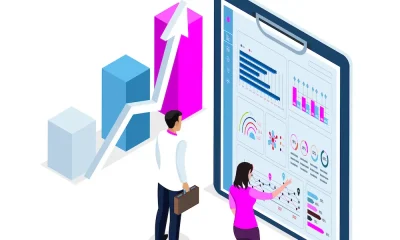Marketing
Using Email After Purchase To Grow Your Business

With your side hustle or startup ready to commence, you will need an eCommerce platform to manage your online store and sales transactions. Plus, you can use it to check-in with customers with an ‘email after purchase‘ aka follow-up email.
Let’s first look at how you can manage your online store and sales transactions.
There are various eCommerce platforms like Shopify, Woocomerce, Bigcommerce that make it easy for websites to list items for sale and manage sales transactions. You’ll want this process to be seamless, so the customer is confident their personal data is safe, especially when using the payment gateway.
eCommerce Platforms
The two largest platforms are Shopify and Woocommerce.
Woocommerce
A WordPress plugin, Woocommerce, is a popular option for websites using the WordPress platform. Set up in 2011, by 2015, Woocommerce had around 30% of all eCommerce sites. More recently, it’s estimated to have around 22% of the top eCommerce sites.
Shopify
You can run your business on Shopify, so you don’t need your own website. Shopify has around 20% market share of all eCommerce sites and is a favourite with users who don’t know much about websites and eCommerce stores. Shopify is a one-stop-shop solution for their business.
Now you’re up to speed with eCommerce platforms, we will move onto the main topic, i.e. using email as the channel for communicating with customers after their purchase.
eCommerce platforms send out millions of emails to buyers confirming their purchase and delivery progress. However, this is just one action that adds value to your customer experience with your business. There are many uses for transactional emails beyond their core function.
Transactional Emails
The emails you get that prompt action, e.g. password reset, email verification, or confirm an action has been taken, e.g. logging into an account, or confirmation of purchase, is called transactional emails.
Typically delivered to recipient transactional email is not typically used for email marketing. Your company news, updates, promotions are campaigns that are delivered to a bulk email list which could have as few as 20 or, for corporates, maybe hundreds of thousands of recipients.
A transactional email can be used for more than its core purpose insofar as it can also reach out to the recipient to take further action.
Transactional email content can include your unique message, including:
- request for feedback
- discount on the next sales
- referral incentives

Let’s look at these strategies in more detail.
1. Customer Service
A quick message in the email that checks in with the customer to see if the item is working out for them is more than a feel-good for the customer. The feedback can help buy the business in their assessment of the product and if it needs improvements or discontinued.
Requesting feedback on the purchasing process will also empower the business to tweak the system where customers feel less satisfied.
For example, they may have had a question about the product they were buying, and the LiveChat or ChatBot was slow to respond.
Using the transactional email to gather intel on the customer experience shortly after their purchase is more likely to respond. Whereas waiting a few days or weeks before reaching out for the feedback, the customer is less inclined to respond.
2. Offer incentives to join the marketing emails list
Another action off your transactional email is requesting the recipient joins your email marketing list. For example, the content in the email could include:
Join our email list for 10% off your next purchase.
3. Referrals requests and rewards
Get the balance right with your transactional emails, and you’ll get higher conversion from your other initiatives too. Offering free samples for referring a friend, submits a review or sharing on social media are just some of the marketing strategies that work with transactional emails.
Summary
Your side hustle or new startup can achieve more when it leverages transactional emails, especially the after purchase email. 🙂
Plus, your eCommerce platform has an email system as part of their service, so all you have to do to improve the message is to add content to reach out to your customers.






